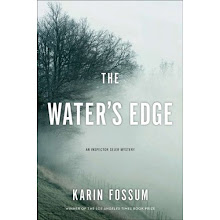

A day later, I dined at a Michelin one-starred spot called enticingly -- ALKIMIA (Alchemy, I assume!) (see http://www.foodandwine.com/restaurants/alkimia-barcelona-catalonia-barcelona ) -- and indeed, the chefs did indeed spin ordinary ingredients into culinary gold, like legendary alchemists of yore, often using modern molecular gastronomic techniques. As was the custom at most of the city's "restaurants de cuisine d'auteur" (as Catalan gourmet-aspiring chefs self-identify), the marvelous meal began with a few amuse-bouche gifts from the kitchen, including a marvelous "shot" of intense-tomato-infused water topped with a razor thin slice of dried tomato and the region's de rigeur celebrated iberico ham. I had put myself in the capable hands of the kitchen, and was rewarded with a wine and food pairing that included "el bonbon de huevo" -- a clever egg-like-looking (it only looked like an egg, thanks to molecular gastronomy wizardry) appetizer that was a savory inspiration. I followed that with a magnificant Amberjack fish course, and then a red mullet masterpiece, and finally a house dessert creation, that drew inspiration from a classic BCN folk dessert -- a "fried" croissant filled with cream -- sinfully delicious!

That same Saturday evening, I attended a performance of Flamenco dance and music at the spectacular PALAU DE LA MUSICA CATALANA (see http://www.travelandleisure.com/articles/classical-music-a-rebirth-in-barcelona ), in the Ramblas/Born area. The building alone is worth the price of admission, being a beaux arts glass and tile masterpiece, but happily, the show was also top notch.

Anyway, after a fine, but not inspirational, meal at Little Italy, I went "strolling" (one of the most fun things to do in BCN!) and stumbled upon a nearby Indian restaurant/night club called KAMA (as in Kama Sutra, I presume)(see http://shoponlinebarcelona.com/companies/view/Kama_Lounge?lang=en ). This was a lively place indeed, filled with folks far younger than I, all having a fun-filled time drinking exotic, Indian spice-inspired cocktails while entertained by house music and a giant screen featuring the hippest of current Bollywood dance numbers! By all means, stop in here for an out-of-the-ordinary meal, cocktail, or a late-night party!





































